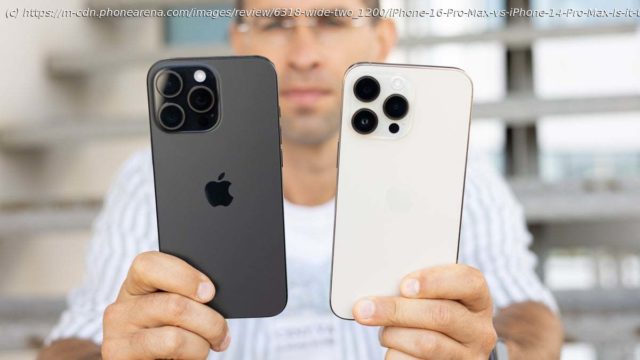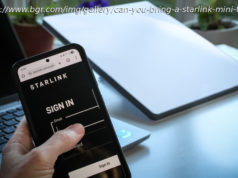The iPhone 16 Pro Max is now official. Should iPhone 14 Pro Max users prepare to upgrade?
Intro
The new iPhone 16 Pro Max is here, and the iPhone 14 Pro Max is now two generations old. Ouch!
With the new jumbo-sized iPhone, we get a larger display with thinner bezels, a new button (the Camera Control button), better performance thanks to the A18 Pro chipset, improved battery life, and improved cameras.
Might not seem like such a big upgrade cycle to some, but then again, new iPhones these days are aimed at people using three- or four-year old devices, so all the improvements are on point.
However, the iPhone 14 Pro Max still feels sufficiently modern. With its Dynamic Island punch-hole, large 48MP main camera, and classic flat design, it’s still a device that will be serving flawlessly for years to come. Sure, it might not be the newest one around, but a case could be made that you probably shouldn’t upgrade to the iPhone 16 Pro Max if you’re content with your iPhone 14 Pro Max.
iPhone 16 Pro Max vs iPhone 13 Pro Max differences:
iPhone 16 Pro MaxiPhone 14 Pro Max
6.9-inch OLED display with 2000 nits of max brightness 6.7-inch OLED display with regular brightness (1600 nits max in HDR mode)
Latest-gen Ceramic Shield Older-gen Ceramic Shield
227gr weight 240gr weight
Titanium body with extremely thin bezels (1.15mm) Stainless-steel body with matte glass backplate and regular bezels
Triple camera: 48MP main camera, 48MP ultra-wide, 12MP telephoto w/ 5X optical zoom A 48MP main camera, 12MP ultra-wide, 12MP telephoto w/ 3X optical zoom
New Photographic Styles Older Photographic Styles
Customizable Action button and Camera Control button Standard ring switch
1-nit minimum brightness Minimum brightness not as impressive
USB Type-C port at the bottom The last iPhone to feature a Lightning port
Apple Intelligence support No Apple Intelligence support
Visual Intelligence support with Camera Control No Visual Intelligence
Second-gen 3nm chip (Apple A18 Pro), with 8GB RAM 4nm Apple A16 Bionic chip, with 6GB RAM
Three or four storage tiers: 256GB, 512GB, 1TB Four storage tiers: 128GB, 256GB, 512GB, 1TB
Better battery life (33 hours of video playback) Smaller battery (4,323mAh) and worse battery life (29 hours of video playback)
25W MagSafe wireless charging 15W MagSafe wireless charging
Wi-Fi 7 and Snapdragon X75 5G modem, delivering higher data speeds Wi-Fi 6, Snapdragon X65 5G, lower data throughput speeds
Table of Contents:
Design and Size
Display Differences
Performance
Camera
Battery and Charging
Audio Quality and Haptics
Specs
Summary
Read more:
iPhone 15 Pro Max review: scope the difference
Apple iPhone 16 Pro Max release date, price, and upgrades
iPhone 16 release date, price, and upgrades
iOS 18: Release date, features, and compatible iPhones
iPhone 16 Plus vs iPhone 14 Plus: Is it time to upgrade?
Design and SizeSome notable differences
Much has changed, but the looks of the iPhone Pro Max lineup have remained consistent (Image by PhoneArena)
The iPhone 16 Pro Max doubles down on the titanium design that debuted with the iPhone 15 Pro Max last year. It remains slightly curved for improved ergonomics, but the most important aspect of the design here could be the thinnest bezels on an iPhone––just 1.15mm!
Oh, did we say the most significant aspect are the bezels? Apologies, the iPhone 16 Pro Max has a much larger 6.9-inch screen. This was achieved thanks to the combination of thinner bezels and slightly taller body. At the same time, the Dynamic Island combining the FaceTime camera and Face ID sensors is here to stay, and so is the customizable Action Button that broke ground in 2023.
Aside from the Action Button, the iPhone 16 Pro Max debuts another new button, dubbed the Camera Control button. It’s a capacitive button with sapphire coating that’s mostly similar to the Touch ID home button on the iPhone 8––delivering haptic feedback and being pressure-sensitive without employing any moving parts. With this button, you get a whole new way of controlling your camera.
After using it for a while, it’s clear that it’s probably far from Apple’s best idea ever. If you have larger hands like me, the Camera Control button will always be in that weird uncomfortable spot in both portrait and landscape orientation.
This way, using it doesn’t feel natural at all, but the polar opposite: you have to go out of your comfort zone in order to use the Camera Control button as Apple intended. Not a very ergonomic decision.
Stainless steel and titanium heavyweights (Image by PhoneArena)
At the same time, the iPhone 14 Pro Max acts as the proverbial bridge between the old and the new Apple design language. It comes with a flat stainless-steel frame and employs both the Dynamic Island and a ring switch. A peculiar mix of classic and new features here. Oh, and there’s a Lightning port at the bottom of the iPhone 14 Pro Max, while the iPhone 16 Pro Max has a USB Type-C port.
Size-wise, the iPhone 16 Pro Max is slightly taller and thicker, but lighter than the iPhone 14 Pro Max, which is great to witness. This is significant, as the iPhone 16 Pro Max also adopts a larger screen and battery, so a win-win scenario on multiple fronts. Sorry, iPhone 14 Pro Max users, but your phone might feel a little old-fashioned in this regard.
Colors-wise, we got the iPhone 14 Pro Max in Space Black, Silver, Gold, and Deep Purple. The iPhone 16 Pro Max colors are Black Titanium, White Titanium, Natural Titanium, and Desert Titanium.
Display Differences
The iPhone 16 Pro Max has the biggest display on an iPhone (Image by PhoneArena)
So, aside from the size, will there be any major changes in the display department? Well, no.
The size bump to 6.9 inches is pretty important, as iPhones rarely get larger screens. Besides this change, the rest of the iPhone display properties have not changed, except for the minimum brightness, which is now a single nit. The Super Retina XDR OLED screen with 120Hz ProMotion that enables super-smooth refresh rate is here to stay.
There’s a new Ceramic Shield coating on the iPhone 16 Pro Max that is reportedly twice as resilient as the one on the iPhone 15 Pro Max.
The iPhone 14 Pro Max, on the other hand, comes with a smaller screen in comparison, a 6.7-inch Super Retina XDR OLED one that also support 120Hz ProMotion. The maximum brightness is lower here, «just» 1,600 nits in HDR mode, which was already surpassed by the next-in-line iPhone 15 Pro Max, so it’s the iPhone 16 Pro Max will most certainly best them all.
Our in-house benchmarks confirm this: we get similar maximum brightness levels on both phones, but the iPhone 16 Pro Max really gets below a nit of minimum brightness. The color accuracy is great on both phones, but the iPhone 14 Pro Max has a slight upper hand as per our tests. Definitely not something that’s easily discernible by the naked eye, but the data definitely points to the older iPhone having a slight upper hand in color accuracy.
And if you’re wondering why we’ve measured a peak brightness of slightly above 1,000 nits, that’s because we measure displays at 100% APL (fully lit screen displaying a white image), whereas manufacturers usually measure over a smaller display area. This allows the lit diodes to draw more power and get brighter.
Display Measurements:
Screen measurements
Color charts
Maximum brightnessHigher is betterMinimum brightness(nits)Lower is betterColor temperature(Kelvins)GammaDelta E rgbcmyLower is betterDelta E grayscaleLower is better
Apple iPhone 16 Pro Max 1046
(Good) 0.93
(Excellent) 6174
(Excellent) 2.21
2.28
(Good) 5.66
(Average)
Apple iPhone 14 Pro Max 1033
(Good) 1.9
(Good) 6716
(Excellent) 2.2
1.98
(Excellent) 5.56
(Average)
View
all
Color gamut
Color accuracy
Grayscale accuracy
The CIE 1931 xy color gamut chart represents the set(area)of colors that a display can reproduce,with the sRGB colorspace(the highlighted triangle)serving as reference.The chart also provides a visual representation of a display’s color accuracy. The small squares across the boundaries of the triangle are the reference points for the various colors, while the small dots are the actual measurements.






